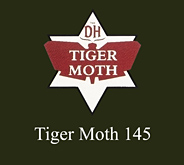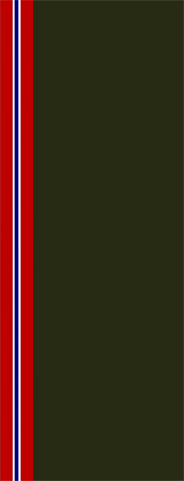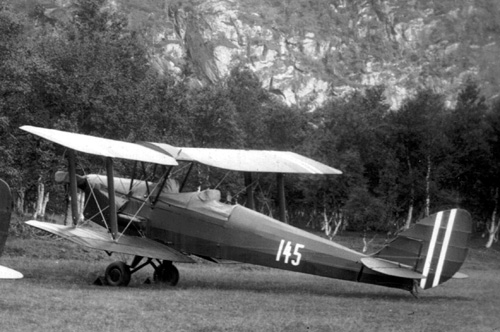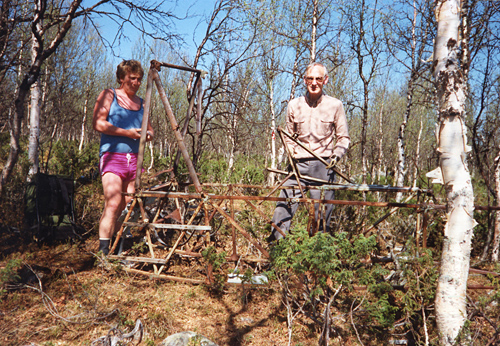






Tiger Moth 145
De Havilland DH.82 Tiger Moth with serial number no. 158 was licence built by Hærens flyfabrikk (the Army Airplane Factory) at Kjeller, Norway in 1933. A Gipsy III engine was installed and the airplane given the registration number 145. Little information is known about its service, but it had accumulated 439 flying hours by January 1940.
Tiger Moth 145 at Elvegårdsmoen north of Narvik in August 1933.
At present its service during the fight against the overwhelming German is somewhat unclear. It is likely that it was one of several ski-equipped airplanes that carried important messages, transported personnel and gave the commanders a vague situational picture during a rather confusing loosing battle in Norway. It was parked on the frozen Lake Lesjaskog on 28 April 1940 when private pilot Conrad Mohr and mechanic Arne Akersveen got permission to fly it to Northern Norway, away from the advancing German forces. For unknown reasons, the engine stopped just north of Dombås. Conrad made a rather successful emergency landing in-between trees.
Conrad Mohr next to Tiger Moth 145. Photo via Bill Mohr.
Tiger Moth 145 was left there to rotten for many years. Now and then local residents removed some parts, amongst them the engine. It was an airframe in a rather sorry state that was salvaged in 1990. The intention by the local War Memorial Group was to restore it and display it at their small museum at Dombås. The fairly complete original engine was tracked down at a local farmer and more parts showed up as the news spread. However, the initiative came to a halt when most of the tail section had been reconstructed.
Bjørn Ødegård and Ivar Angard with the remains of Tiger Moth 145 in 1990.
Photo via Ivar Angard.
In 2009, some of the volunteers at the Storch project got afraid of having too little to do during quiet periods. “Give us a Tiger Moth” was heard and the search for a non-flyable project started. A deal was stuck with the War Memorial Group at Dombås and Tiger Moth 145 arrived at the workshop in Fetsund on October 2009. The plan is to restore the Tiger on ‘as and when basis’ and return it to 1940 standard with skies and winter camouflage.
When complete, it will be returned to Dombås and displayed. Lake Lesjaskog was a focal point of areal warfare during the hectic days of April 1940 and several airframes has later been removed from the area. The Heinkel He 111 at Gardermoen, The Gloster Gladiator at Bodø, the Gloster Gladiator remains at Hendon and the Blackburn Skua remains at Yeovilton all originates from that area. It’s about right that something remains in the northern part of the Gudbrandsdal Valley.
The restoration
For obvious reasons the workshop became rather cramped when the airframe of Tiger Moth 145 arrived. The plan is to increase the winter isolated area with a carpenter’s workshop. The restoration project is run by Eivind Svenningsen and the first priority is to copy necessary drawings and start to collect non-airworthy Tiger Moth parts left over from several Tiger Moth restorations that has been carried out lately in the Kjeller area.
Some of the parts as they arrived in October 2009


